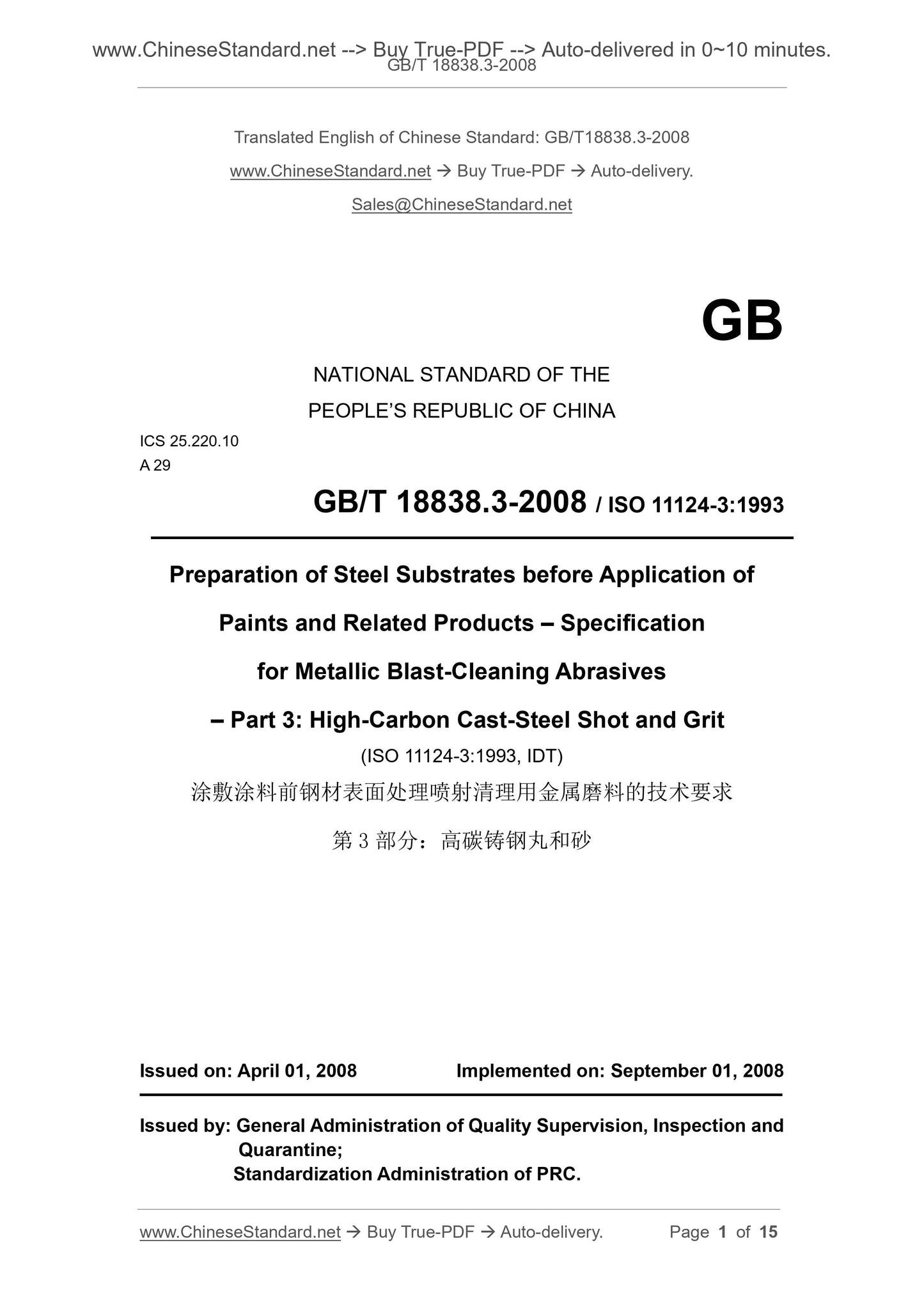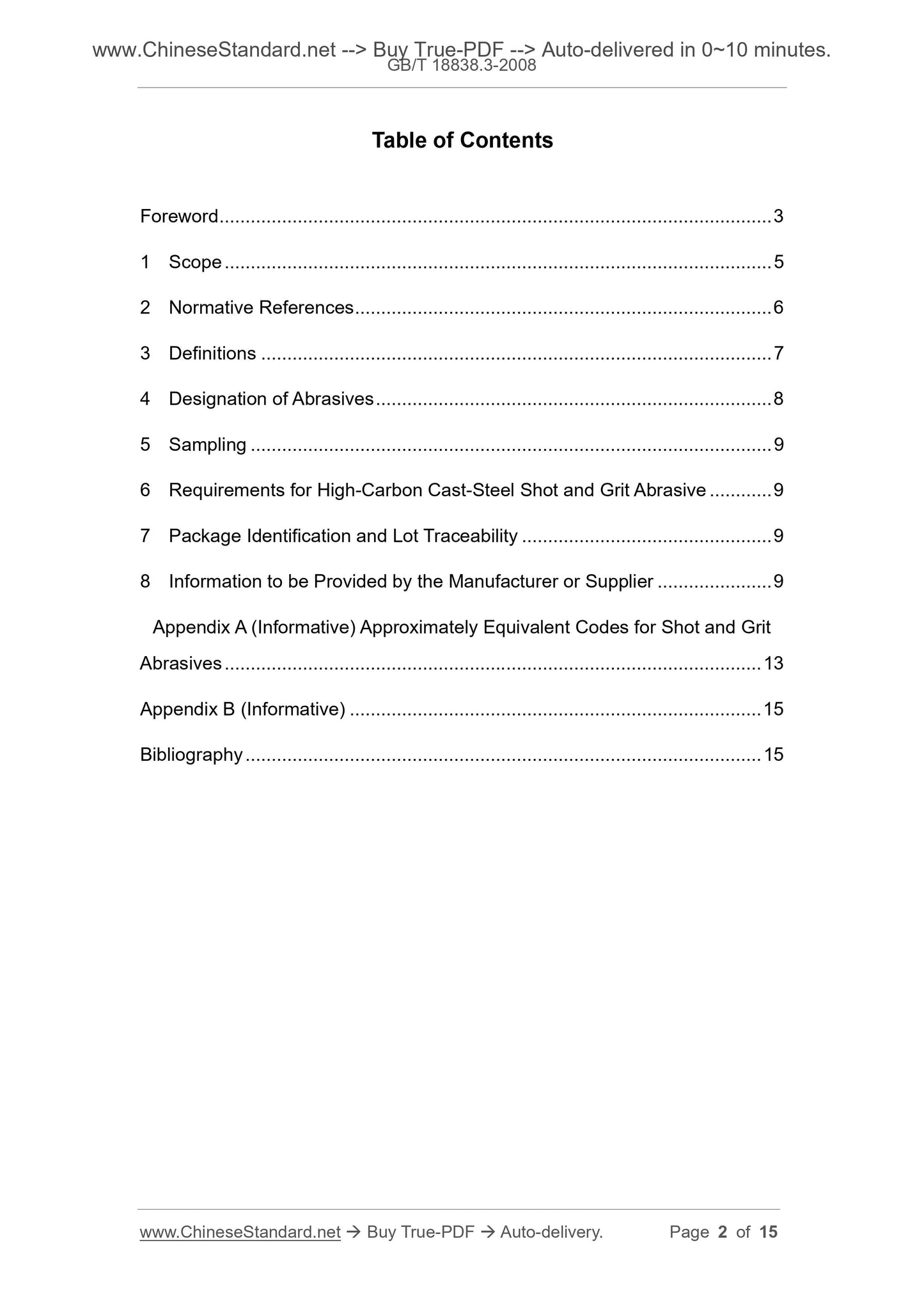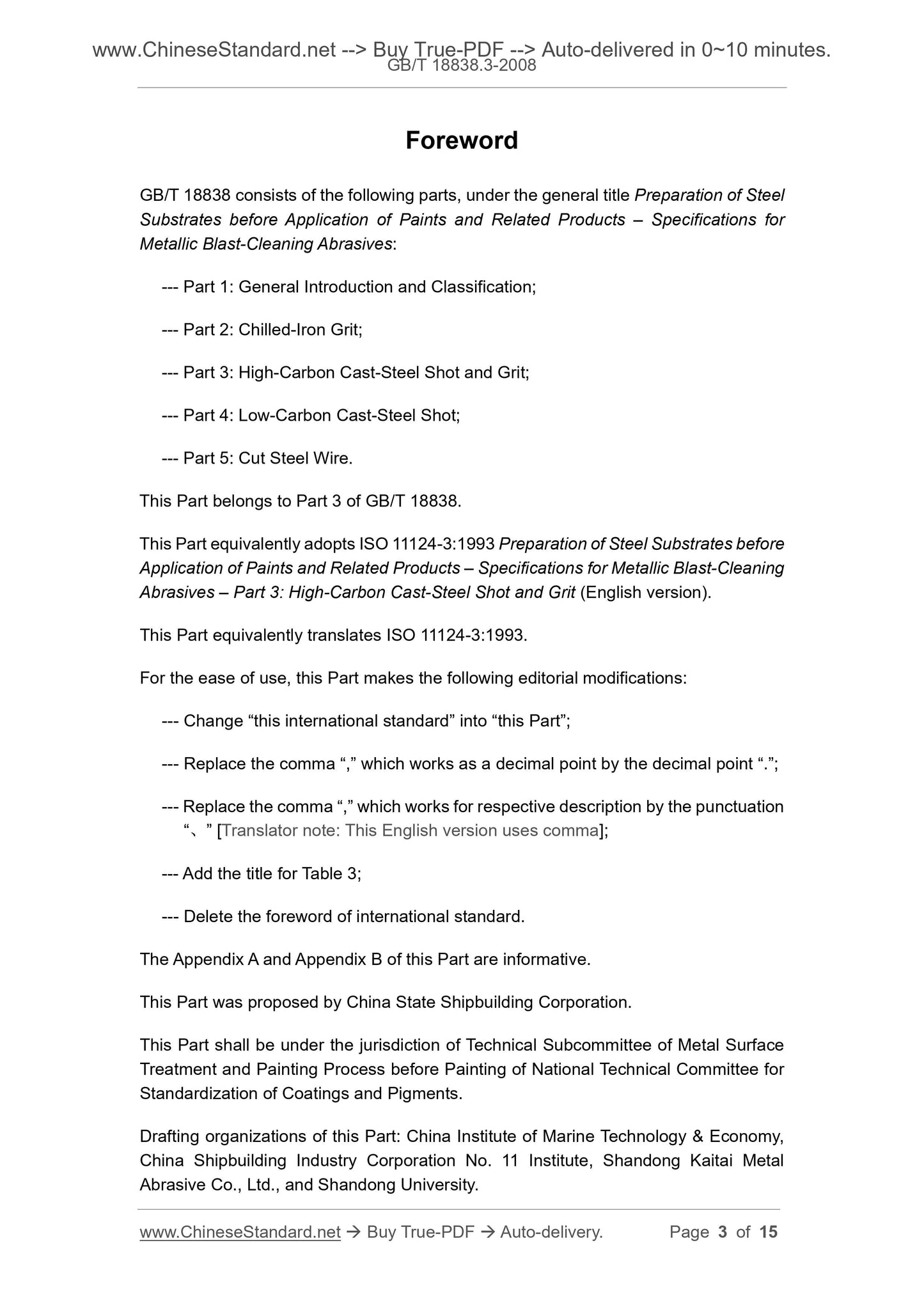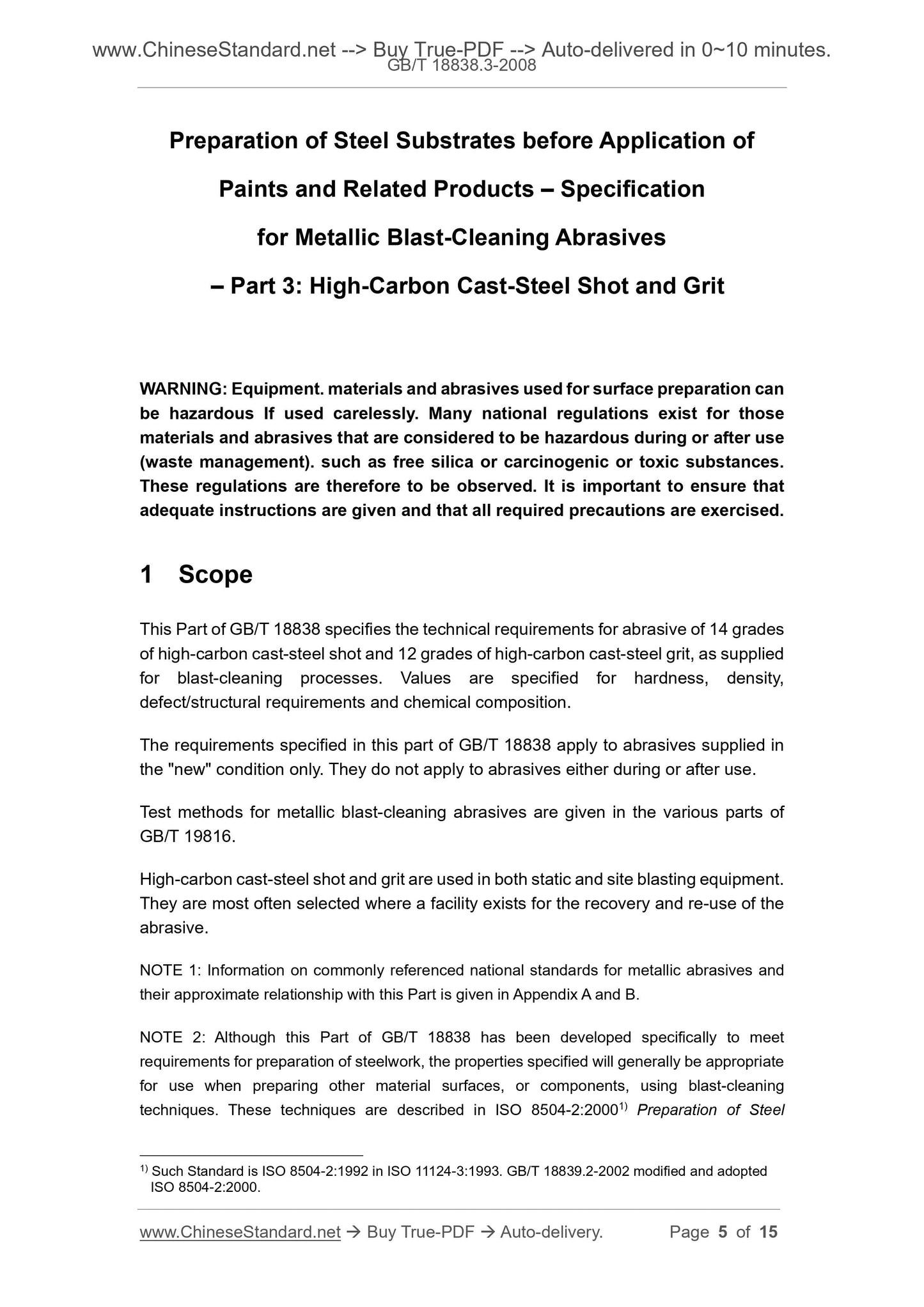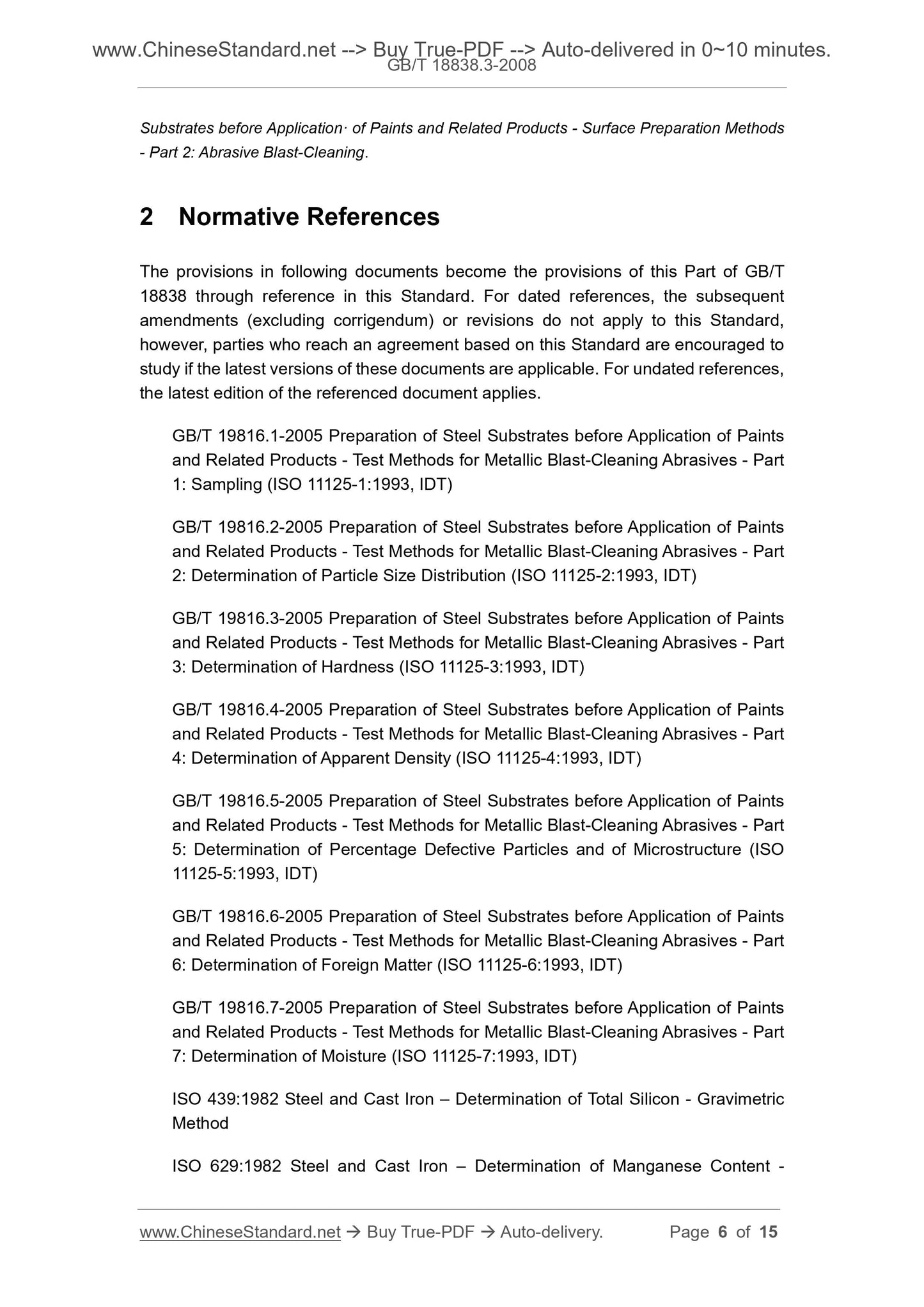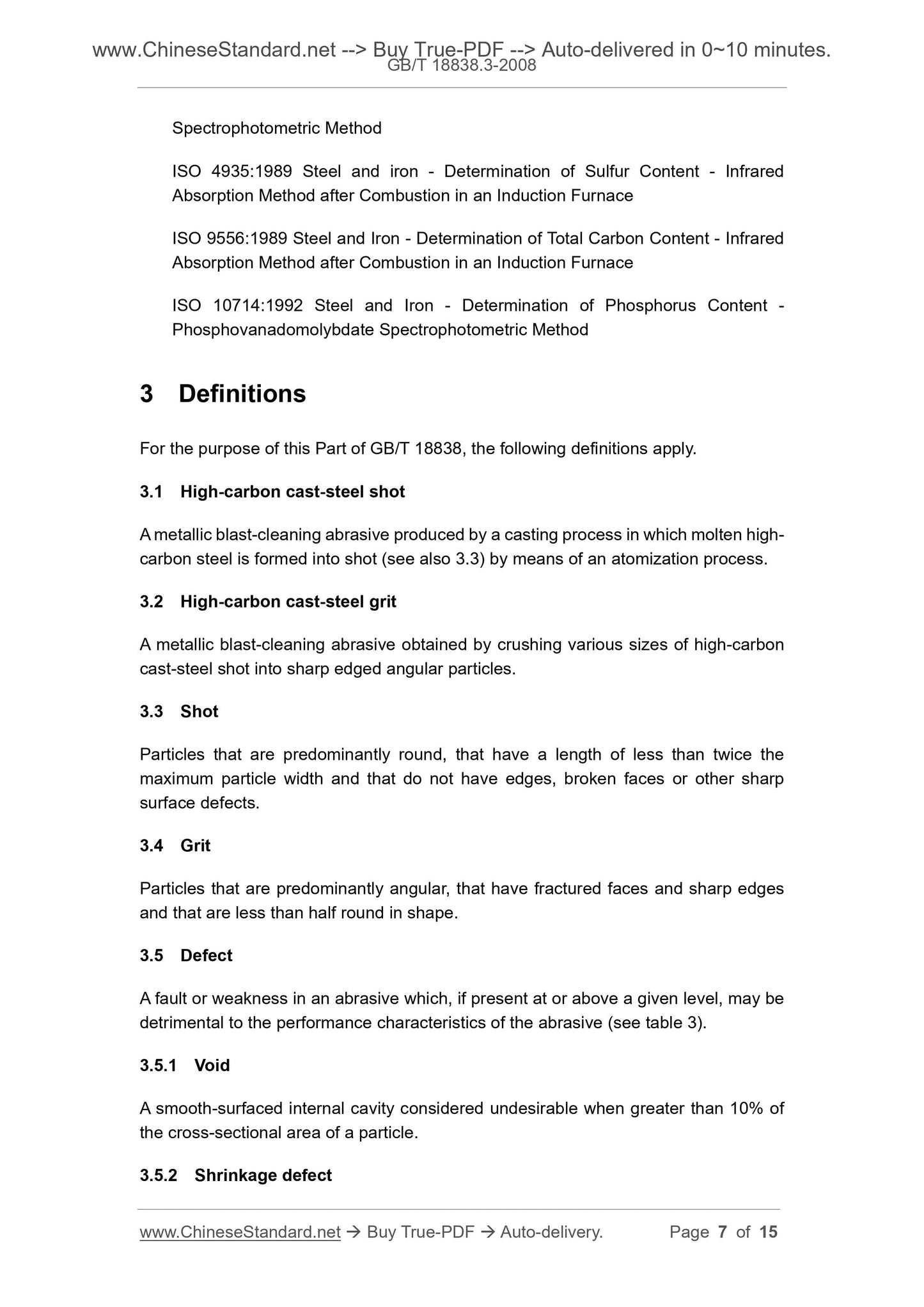1
/
of
6
www.ChineseStandard.us -- Field Test Asia Pte. Ltd.
GB/T 18838.3-2008 English PDF (GB/T18838.3-2008)
GB/T 18838.3-2008 English PDF (GB/T18838.3-2008)
Regular price
$90.00
Regular price
Sale price
$90.00
Unit price
/
per
Shipping calculated at checkout.
Couldn't load pickup availability
GB/T 18838.3-2008: Preparation of steel substrates before application of paints and related products -- Specifications for metallic blast-cleaning abrasives -- Part 3: High-carbon cast-steel shot and grit
Delivery: 9 seconds. Download (and Email) true-PDF + Invoice.Get Quotation: Click GB/T 18838.3-2008 (Self-service in 1-minute)
Newer / historical versions: GB/T 18838.3-2008
Preview True-PDF
Scope
This part of GB/T 18838 specifies 14 grades of high carbon cast steel shots for blast cleaning and 12 grades of high carbon cast steel sanders.Material requirements, including hardness, density, defects and structural requirements, and chemical composition.
The requirements of this part of ISO /IEC 18838 apply only to abrasives that have not been used, and do not apply to used abrasives.
The test method for blast cleaning metal abrasives is shown in various parts of GB/T 19816.
High-carbon cast steel pellets and sand are recyclable and reusable abrasives that can be used both in fixed and on-site injection equipment.
Note 1. Refer to Appendix A and Appendix B for a list of commonly used standards for metal abrasives in the world and their relationship with this standard.
Note 2. Although this part of the GB/T 18838 is specifically formulated to meet the surface treatment requirements of steel structures, the specified characteristics are generally applicable to
Surfaces or components of other materials treated with jet cleaning techniques. These provisions are already in ISO 8504-2.20001) "Coating the surface of steel before coating
Surface Treatment Methods Part 2. Abrasive blast cleaning.
Basic Data
| Standard ID | GB/T 18838.3-2008 (GB/T18838.3-2008) |
| Description (Translated English) | Preparation of steel substrates before application of paints and related products -- Specifications for metallic blast-cleaning abrasives -- Part 3: High-carbon cast-steel shot and grit |
| Sector / Industry | National Standard (Recommended) |
| Classification of Chinese Standard | A29 |
| Classification of International Standard | 25.220.10 |
| Word Count Estimation | 12,170 |
| Date of Issue | 2008-04-01 |
| Date of Implementation | 2008-09-01 |
| Quoted Standard | GB/T 19816.1-2005; GB/T 19816.2-2005; GB/T 19816.3-2005; GB/T 19816.4-2005; GB/T 19816.5-2005; GB/T 19816.6-2005; GB/T 19816.7-2005; ISO 439-1982; ISO 629-1982; ISO 4935-1989; ISO 9556-1989; ISO 10714-1992 |
| Adopted Standard | ISO 11124-3-1993, IDT |
| Regulation (derived from) | Announcement of Newly Approved National Standards No. 5, 2008 (No. 118 overall) |
| Issuing agency(ies) | General Administration of Quality Supervision, Inspection and Quarantine of the People's Republic of China, Standardization Administration of the People's Republic of China |
| Summary | This standard specifies the use of 14 kinds of blast-cleaned grade carbon steel balls and 12 levels of high-carbon cast steel grit abrasives, including hardness, density, defects and structural requirements and chemical ingredients. GB/T 18838 requirements of this part apply only to unused too abrasive, does not apply to used abrasives. Blast cleaning abrasives test methods GB/T 19816 various parts. Carbon steel shot and grit are recyclable and reusable abrasive, but also can be used for fixed equipment for field injection. |
Share
